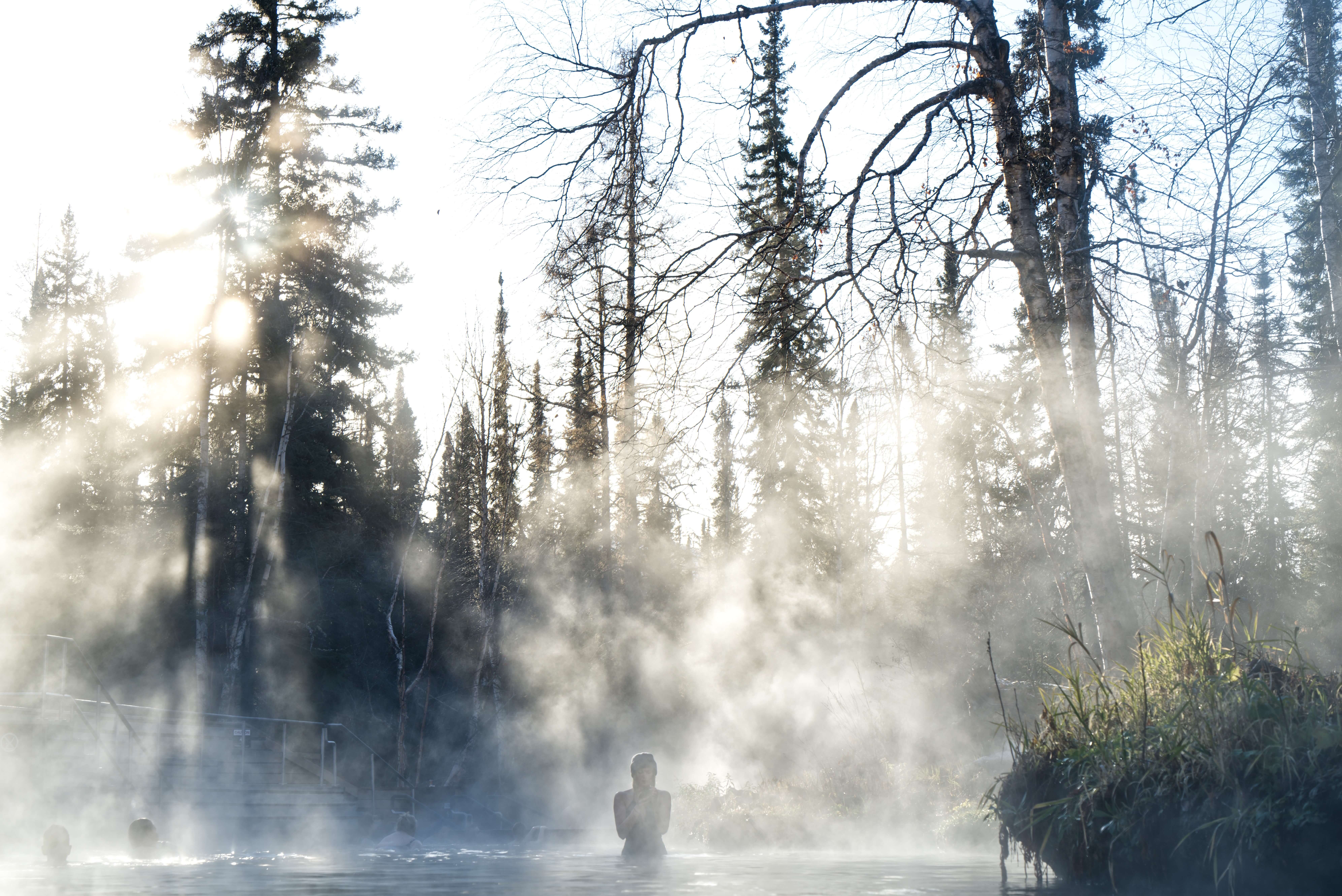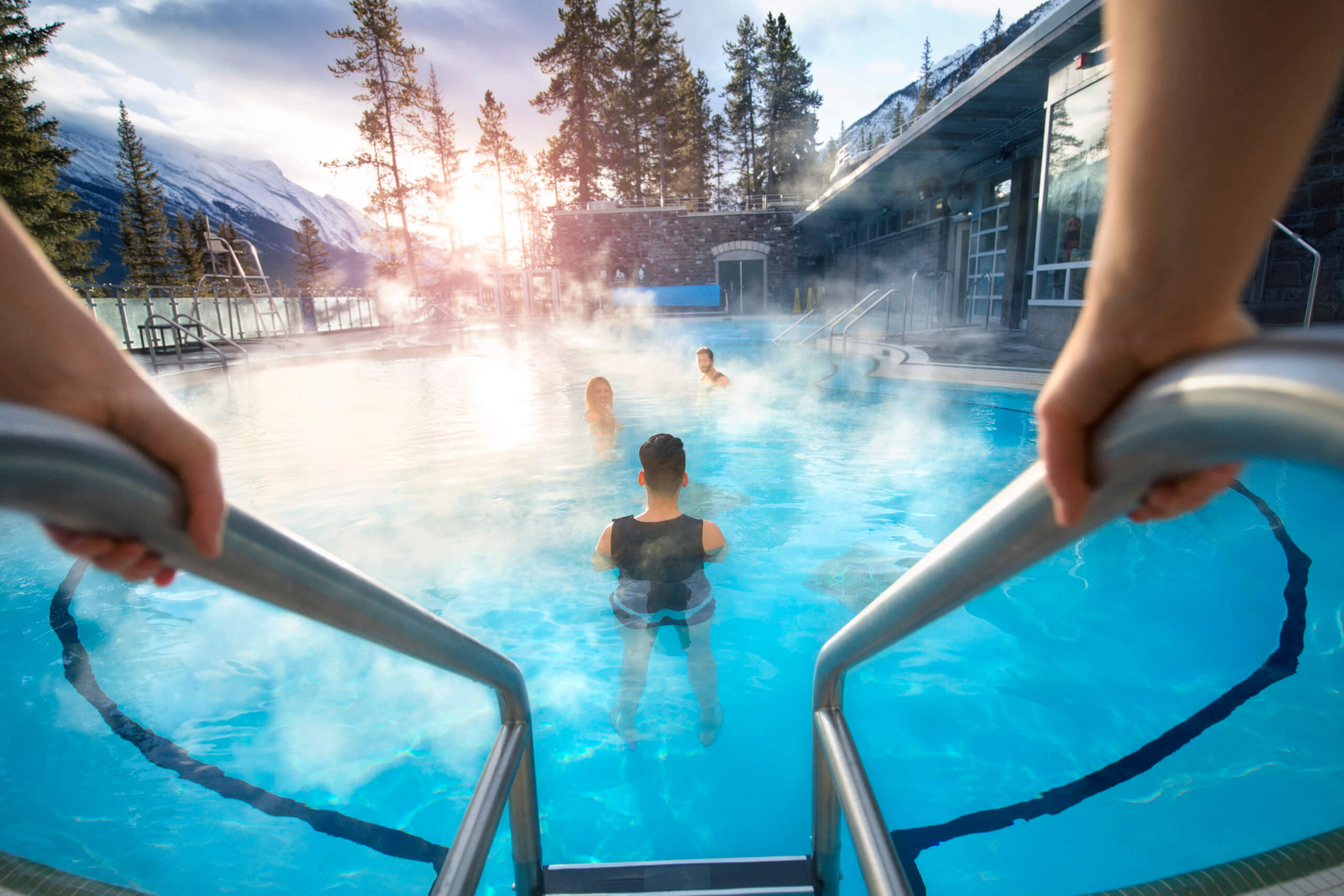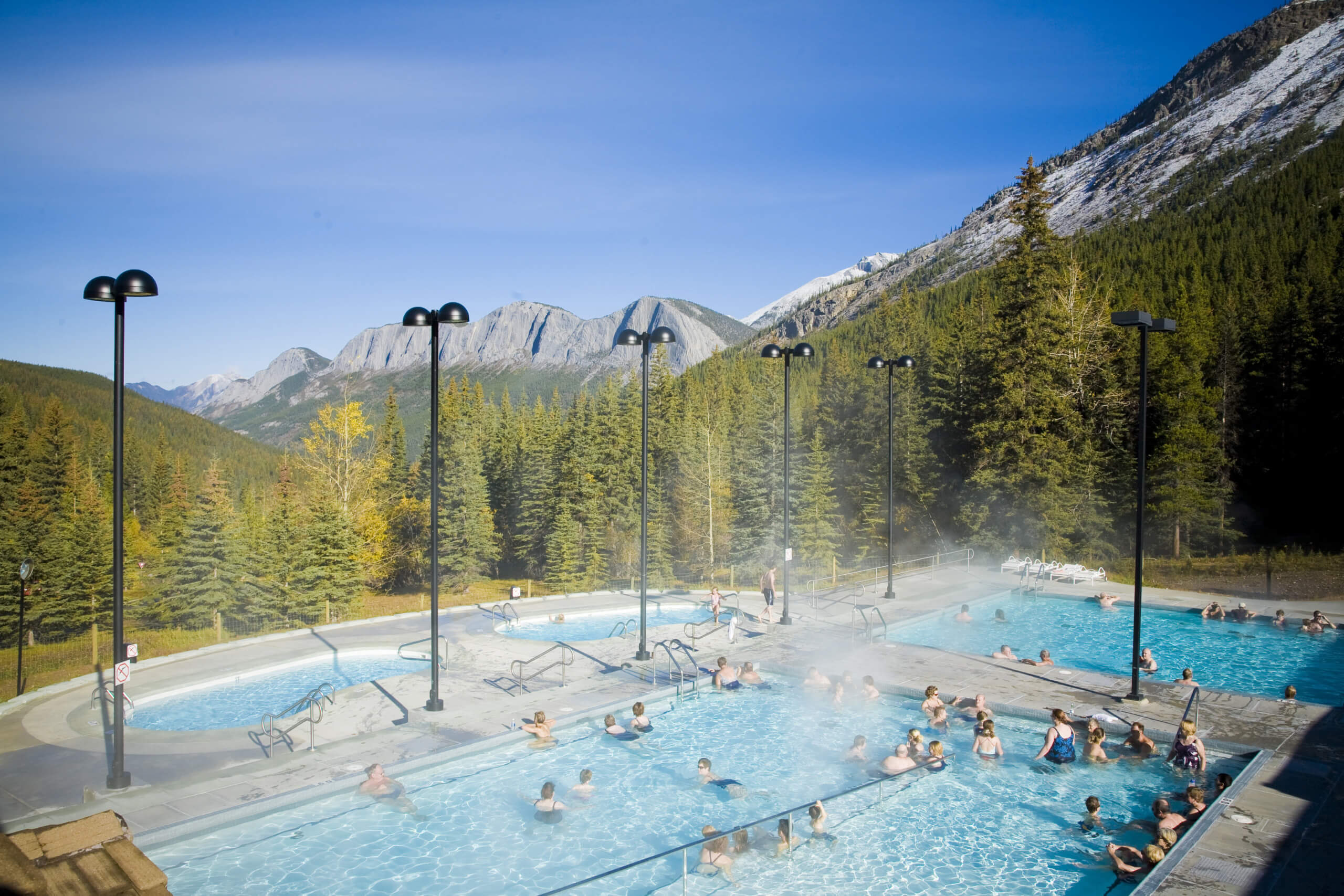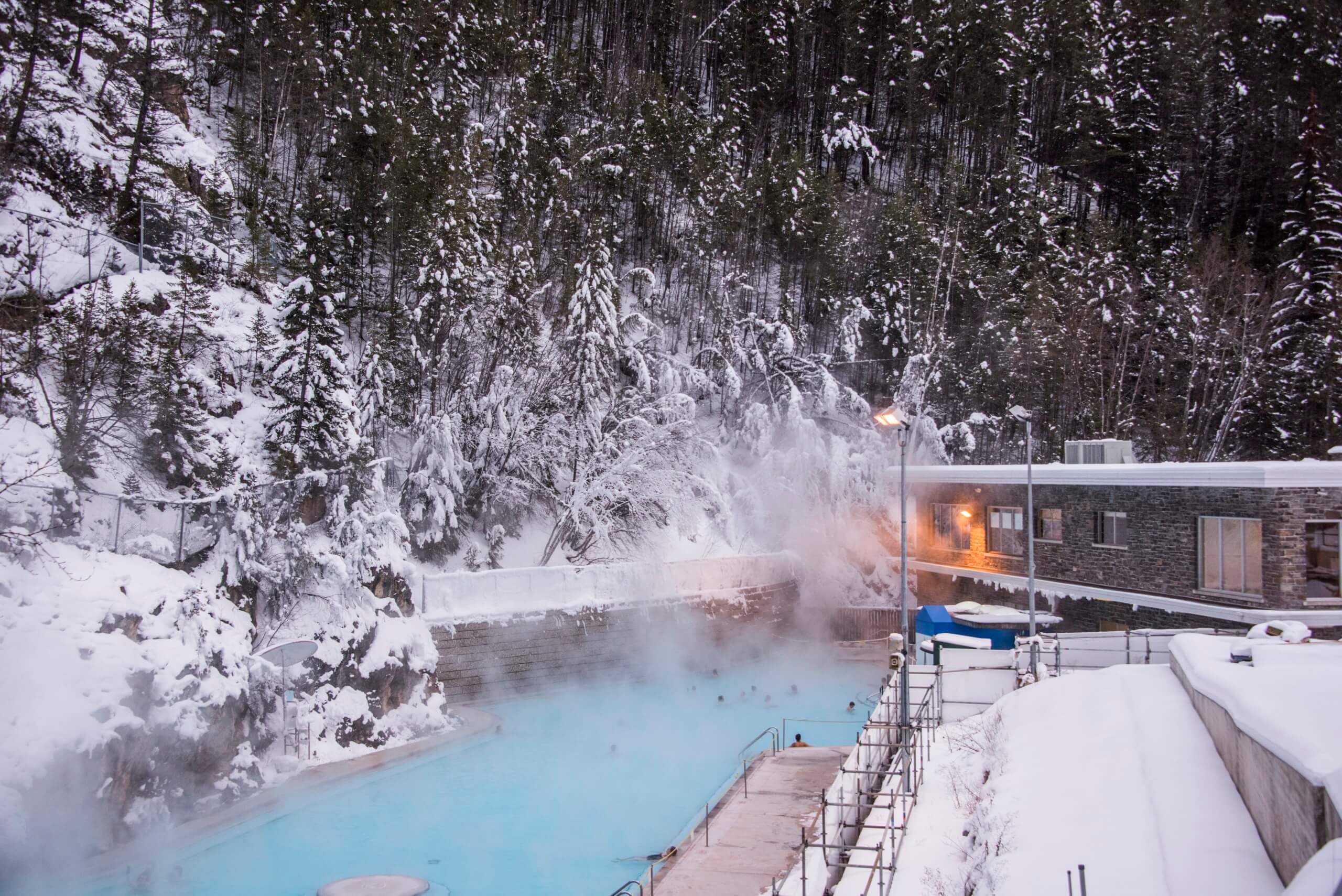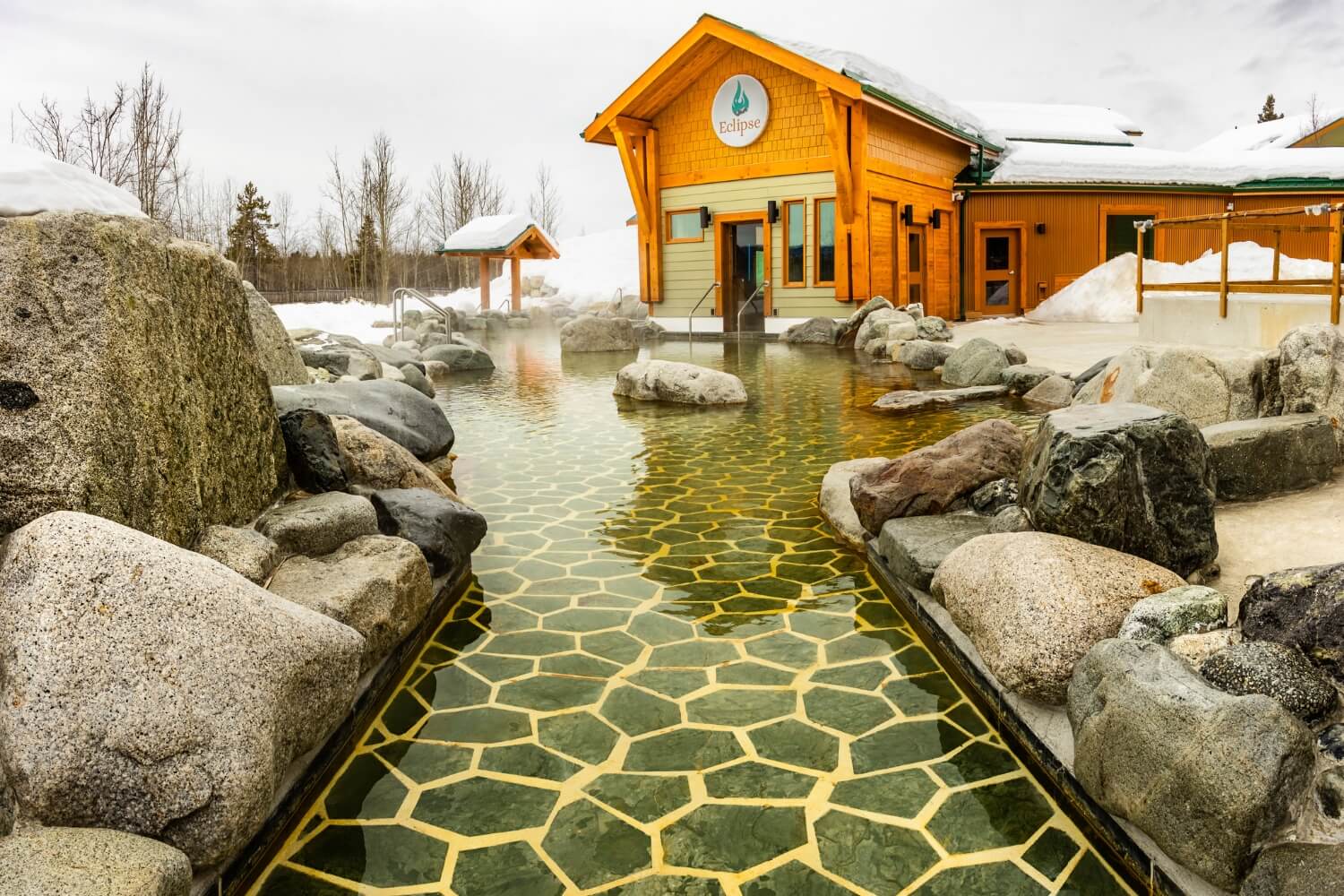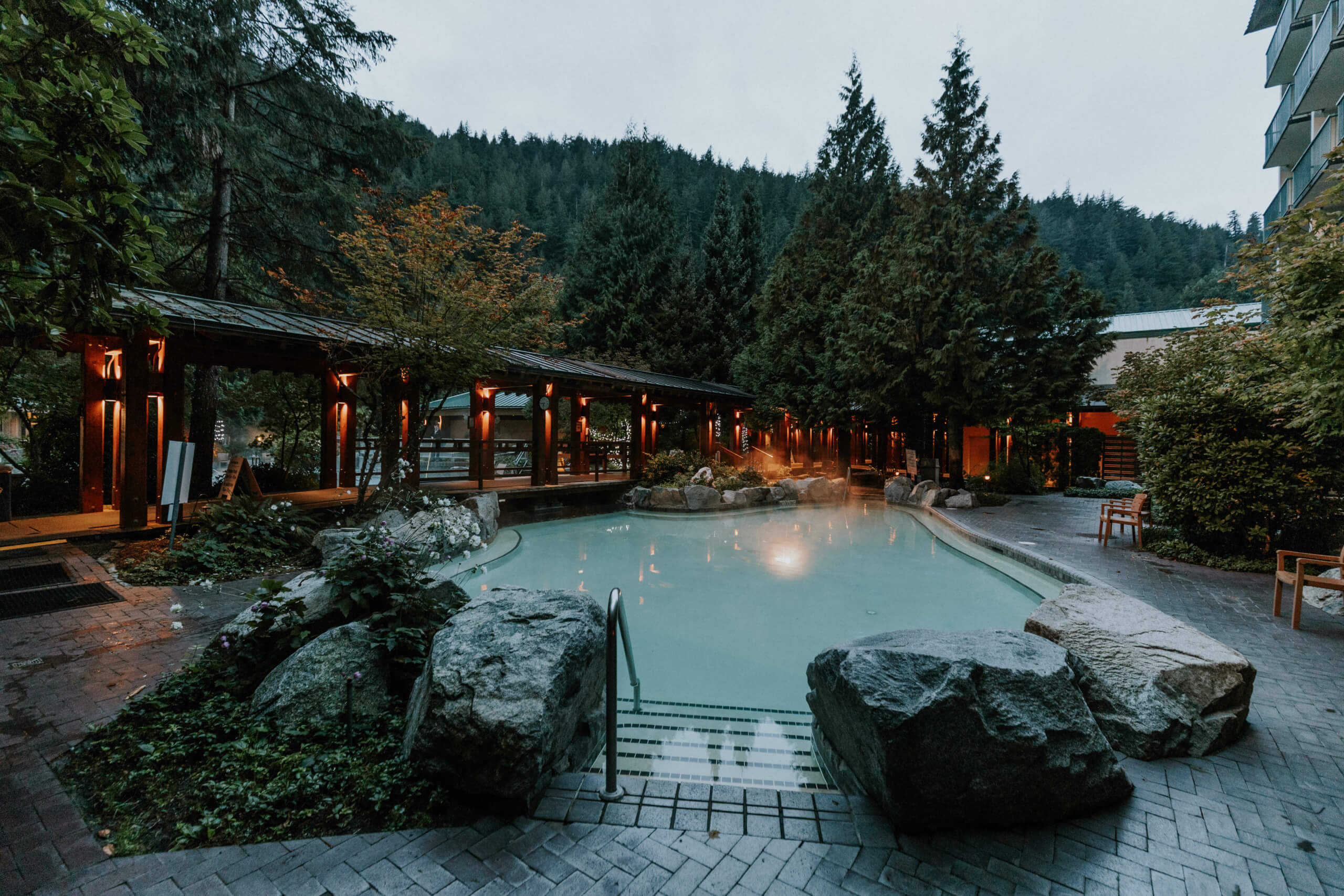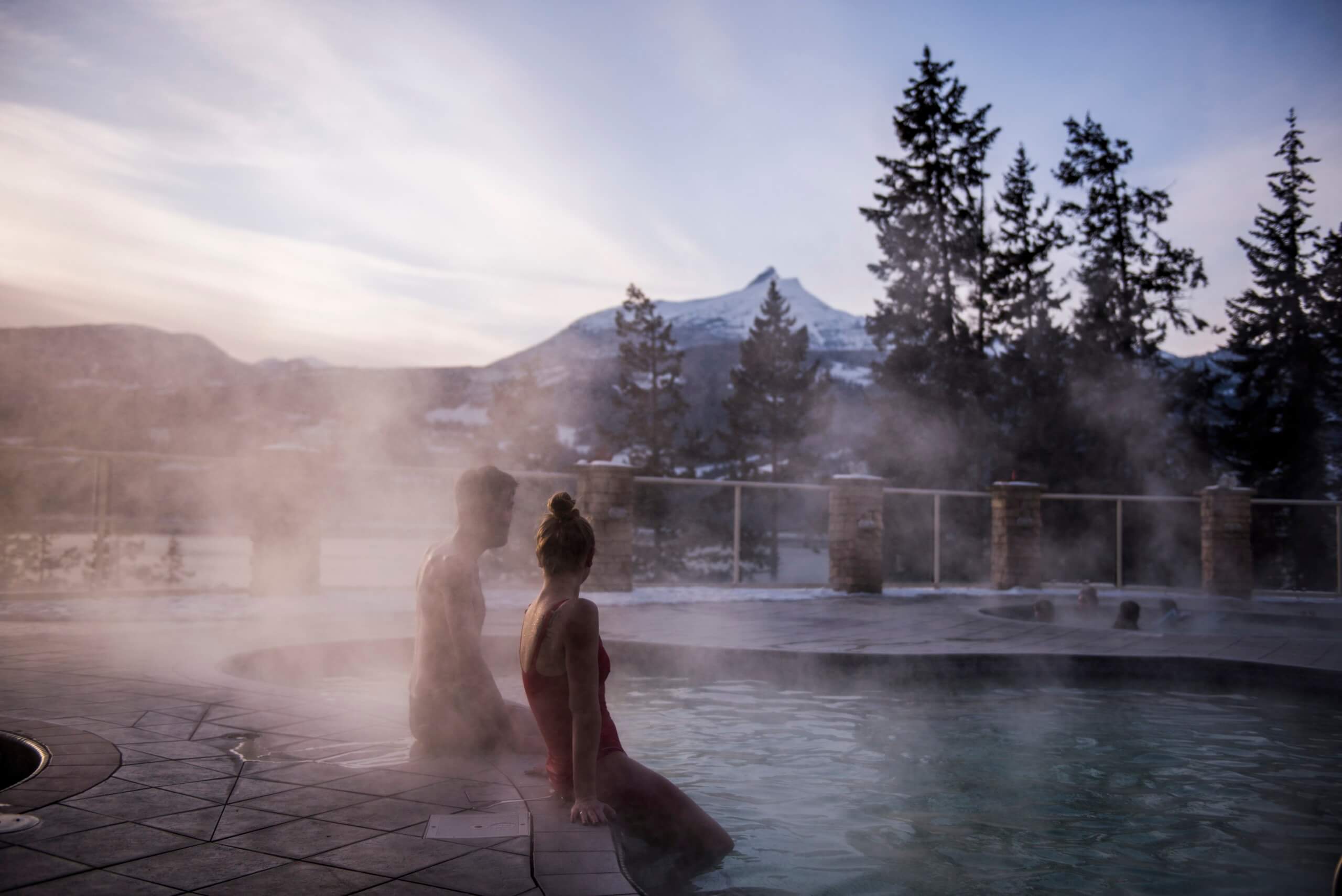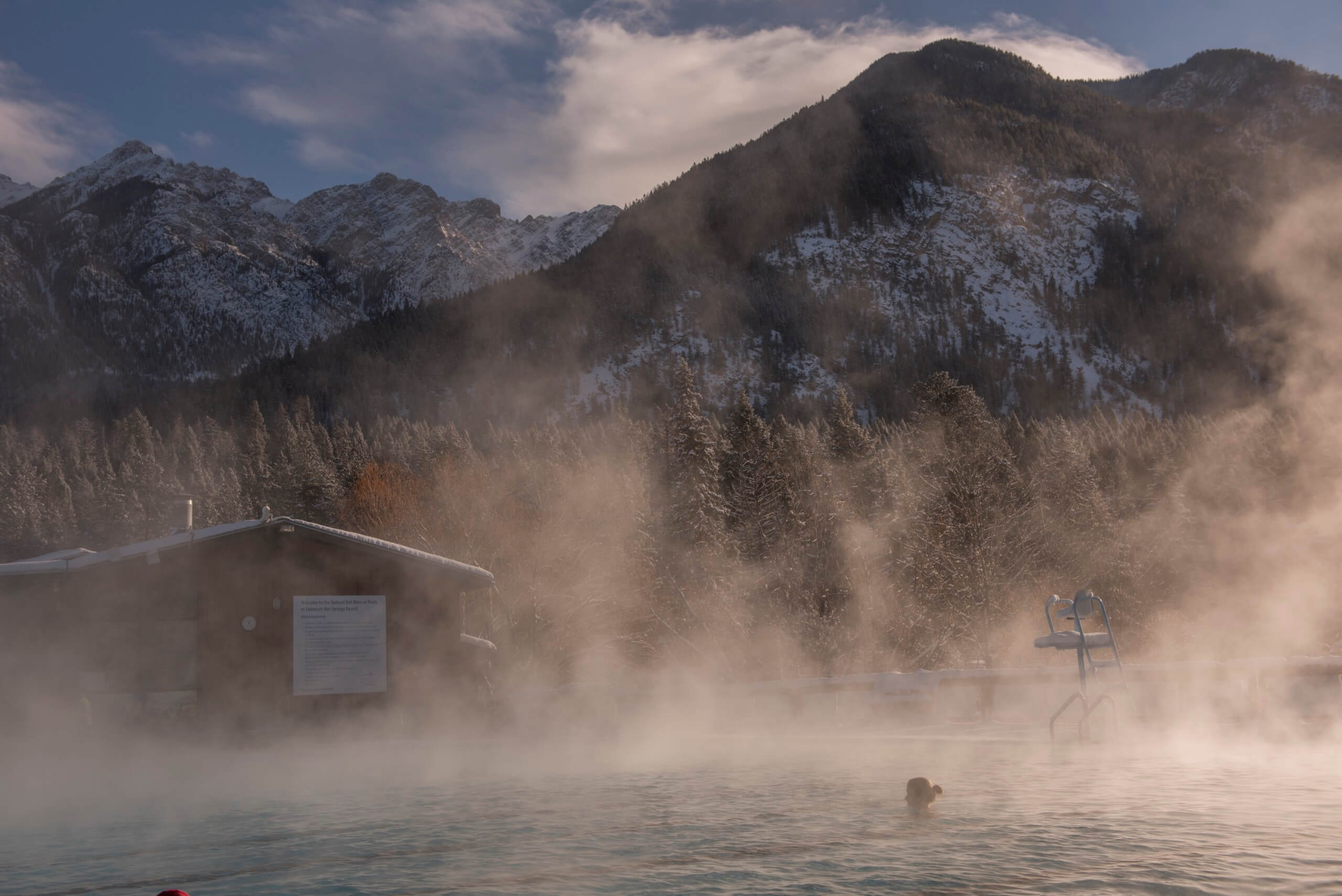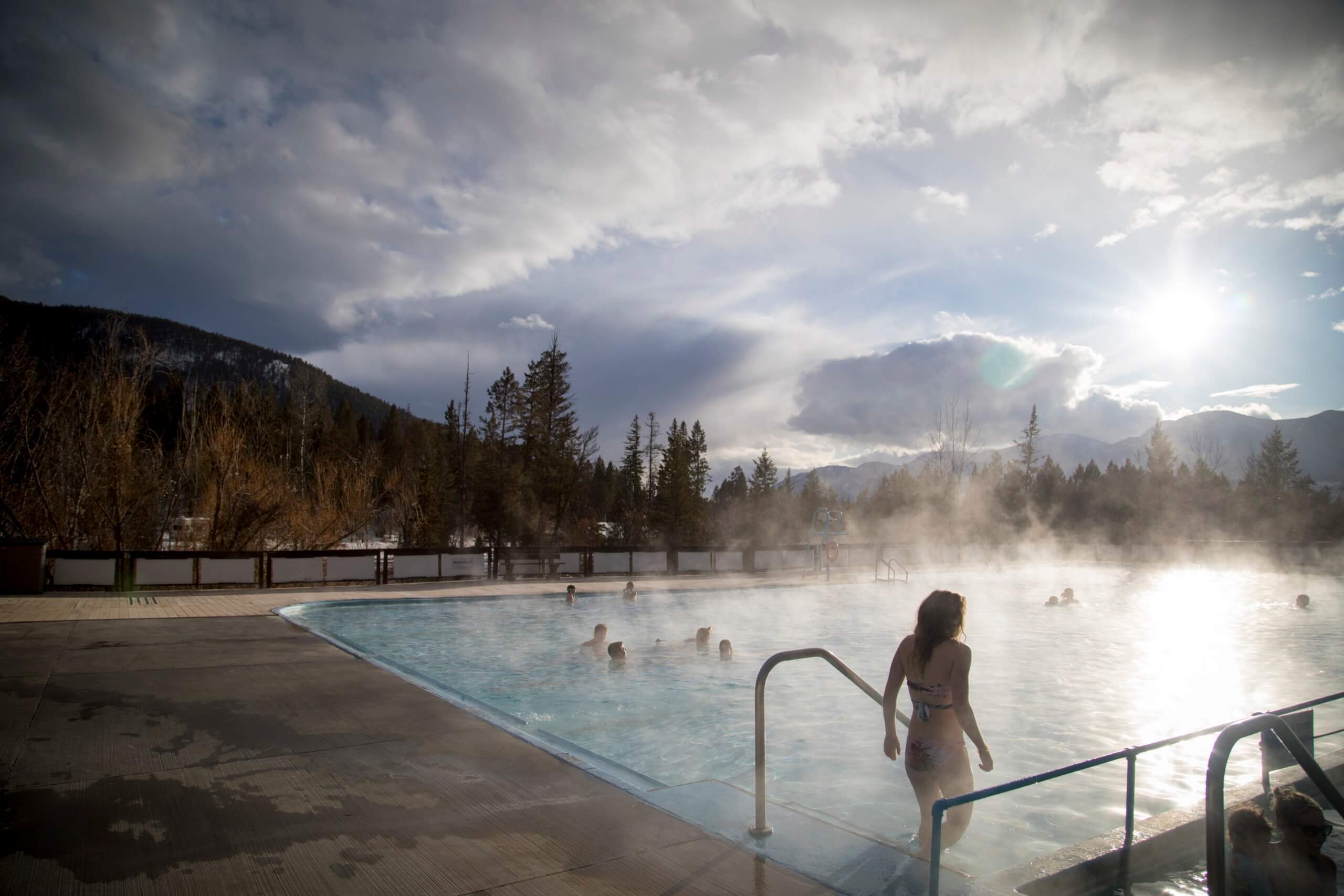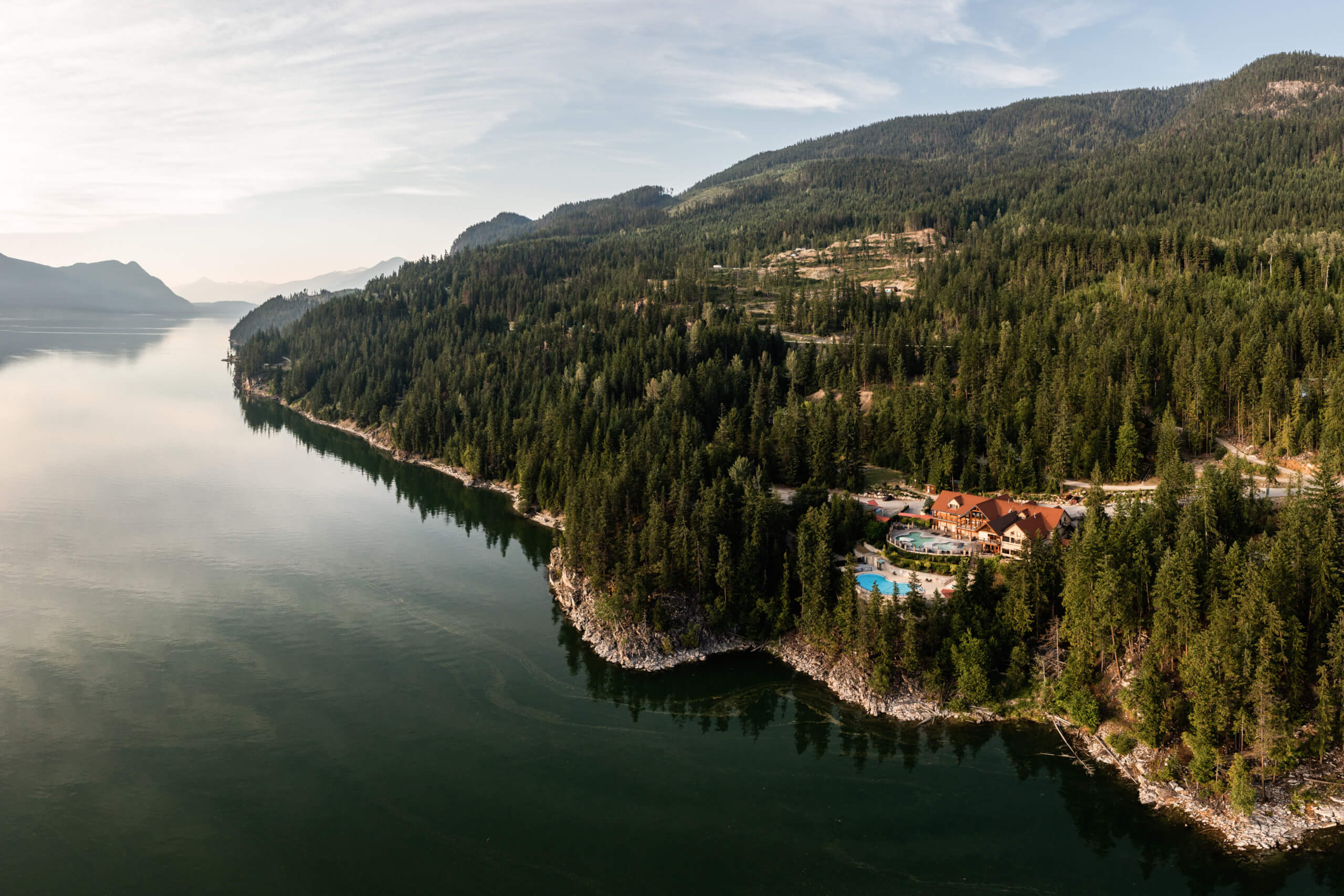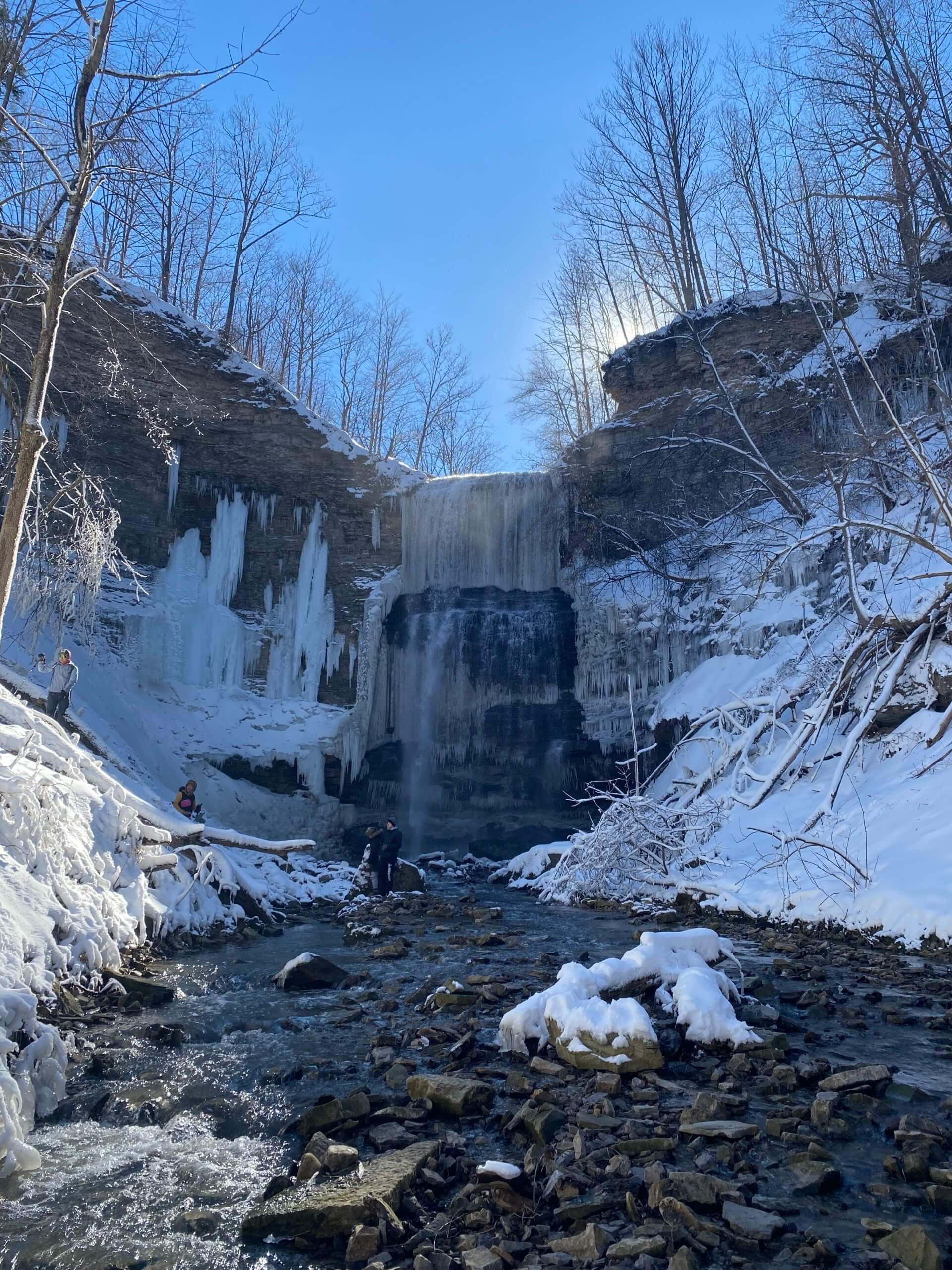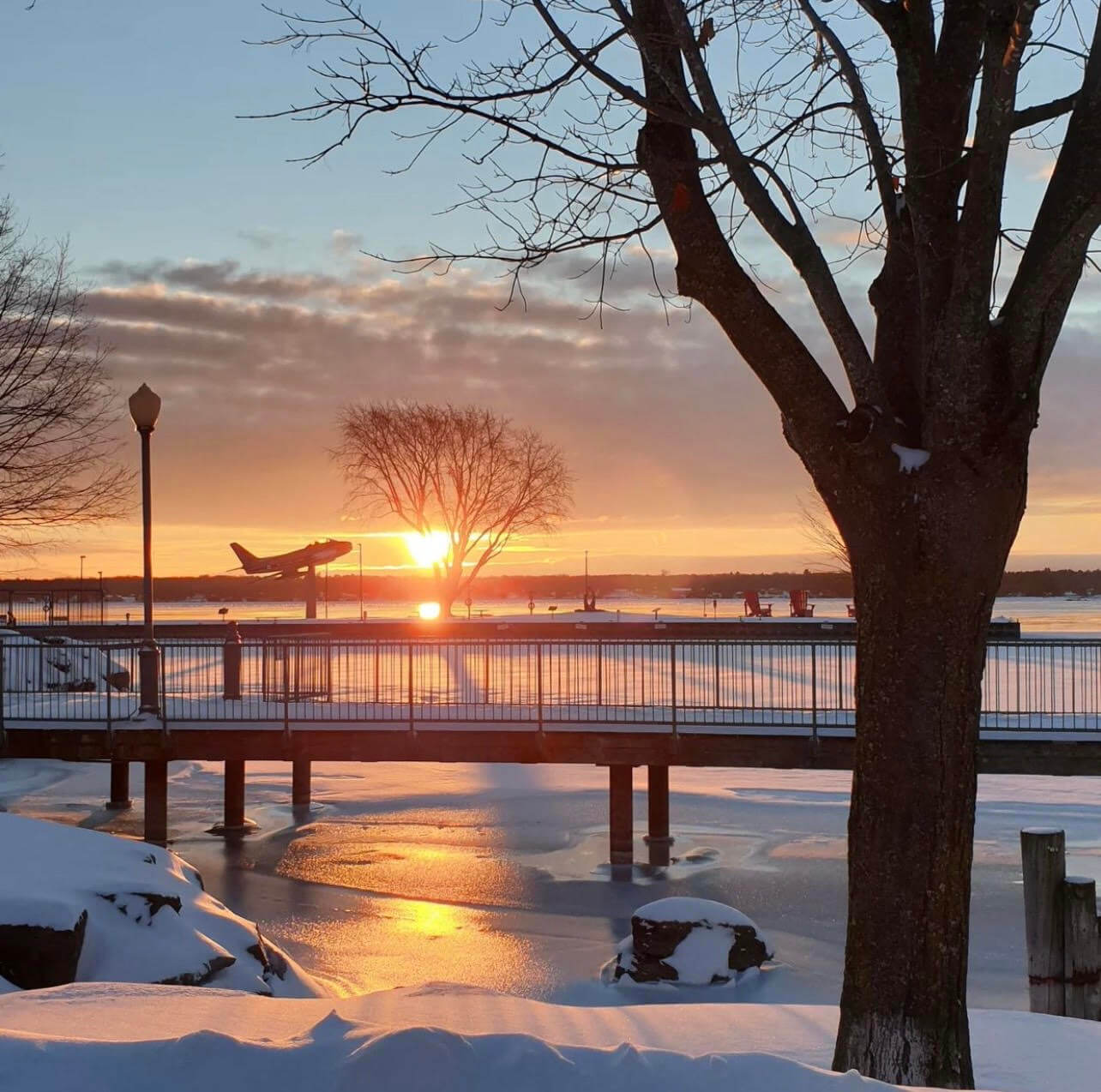11 Canadian Hot Springs Worth Visiting
Whether you’re after blissful relaxation or concrete health benefits, it is hard to resist a visit to a hot springs when travelling.
There are many natural hot springs in Canada and, as a bonus, these thermal wonders are located in some of the country’s most beautiful regions — making it easy to plan your whole trip around a hot springs visit.
Keep in mind that some hot springs are easier to access than others — and, of course, the harder they are to access, the more likely you’ll have them all to yourself. Below is a list of 11 incredible hot springs locations in Canada to get you in the mood for some relaxation. Our list includes a mix of well-developed sites, many of which are family-friendly, and some that take a bit more effort to reach.
Read to the end for a list of benefits offered by mineral hot springs in Canada and reach out to us if you’d like help creating a perfect wellness-oriented itinerary.
1. Banff Upper Hot Springs (Alberta):
One of Canada’s most popular and well-known thermal waters is Banff Upper Hot Springs, which is located in Banff National Park in the heart of the Rocky Mountains.
Sitting at an elevation of 1,585 metres, near the top of Sulphur Mountain, these thermal waters come with a spectacular view. The pools are operated by Parks Canada on a first come, first served basis (no reservations) and can get very busy, especially during the summer months when the weather is warm and the days are long. Visiting during the shoulder seasons, in the spring and fall, can be a good option as the crowds will be smaller and the temperature will still be pleasant. Winter is also a great time to visit if you enjoy the snow as the hot springs offer a nice way to warm up and relax after a day of winter hiking or skiing. The water temperature in the main pool ranges from 37°C to 40°C.
Banff Upper Hot Springs are approximately 4 km south of the town of Banff. Limited parking is available but visitors are encouraged to take public transportation (the springs can be reached by ROAM bus Route 1). Change rooms, a gift shop and a cafe are available onsite.
2. Miette Hot Springs (Alberta):
Another popular Rocky Mountain hot springs is located in Jasper National Park. Surrounded by jagged mountain peaks and located about 28 km east of the town of Jasper, Miette Hot Springs is slightly more difficult to reach than its Banff counterpart. Entrance is on a first come, first served basis and only open seasonally during the warmer month. These hot springs are the hottest in the Canadian Rockies, with water flowing at a temperature reaching up to 54°C. It cools to a perfectly comfortable 40°C as it enters the hot springs pool.
The facility also includes change rooms, showers and a gift shop. The hot springs are situated in a more remote area of the park along the scenic Miette Road. Keep in mind that the last 4 km of the road is gravel.
3. Ainsworth Hot Springs Resort (British Columbia):
The most unique feature of the Ainsworth Hot Springs, which are located on the shores of Kootenay Lake in British Columbia, is the 150-foot horseshoe caves. Thermal waters fill the dark caves (which are tunnels dug into the rock) and visitors can explore while soaking in the steamy, mineral-rich waters. Outside is a large, family-friendly hot pool with stunning views of the lake and surrounding Kootenay Mountains.
Mineral waters originate near the Cody Caves, which are located at a higher elevation, and enter Ainsworth at a temperature of 47°C. The waters are then cooled to about 42°C for the caves and an average of 35°C for the main pool. The waters contain calcium, magnesium and sodium among others — and although the mineral content of the water is high, it is odourless. The site, which is Indigenous owned and operated, also features a cold plunge fed by a mountain stream.
4. Radium Hot Springs (British Columbia):
Located in Sinclair Canyon just a few minutes inside the boundaries of BC’s Kootenay National Park, Radium Hot Springs features a naturally heated hot pool and a large cooler swimming pool.
The water temperature in the hot soaking pool hovers around the 39°C mark and the cool pool is kept at 27-29 °C. Facilities, which are open year round, include change rooms and accessibility features such as submersible wheelchairs, a chairlift into the cooler pool and a ramp into the hot pool. Much like the other hot spring facilities run by Parks Canada, Radium operates on a first come, first served basis and does not accept reservations.
The village of Radium Hot Springs is just 3 km away, with plenty of dining and shopping options.
5. Eclipse Nordic Hot Springs (Yukon):
The Eclipse Nordic Hot Springs is an adults-only facility located approximately 35 minutes outside of Whitehorse in the Yukon. The spa is designed to combine the Nordic practice of thermotherapy (which includes hot, cold and relaxation cycles) with the benefits of the Japanese Onsen style of soaking in mineral waters.
Water exits the source at approximately 46°C but the temperature in the various pools range from 38 – 42°C depending on the weather and season. In addition to the thermal pools, the facility also has sunrooms for relaxation, cold plunges and showers, as well as saunas and steam rooms.
See our Guide to the Yukon for more information.
6. Liard River Hot Springs (British Columbia):

Hot springs at Liard River Hot Springs Provincial Park in winter. Photo c/o Northern BC Tourism/Chris Gale
Set in a lush boreal spruce forest just off the Alaska Highway (Hwy 97), the Liard River Hot Springs are an oasis in Northern British Columbia.
Liard Hot Springs is located inside a provincial park of the same name and open year-round. The hot springs are especially popular during the summer months. The Alpha pool, which is open to the public, has water temperatures ranging from 42°C to 52°C and features a change house and composting toilet. The boardwalk leading to the hot spring pool passes through a warm water swamp and boreal forest, which supports diverse plant and animal life, including moose. Visitors are required to stay on the boardwalk to protect the sensitive habitat. The lush vegetation in the area earned it the nickname “Tropical Valley.”
7. Kraus Hot Springs (Northwest Territories):
It takes 30 kilometres of padding through the Nahanni National Park Reserve’s epic wilderness to reach the Kraus Hot Springs. The springs boast hot water and a high concentration of minerals, both of which work to sooth muscles sore from all that paddling. But the high amounts of sulphate do results in a noticeable sulphuric smell.
With such an arduous journey to reach these hot springs, you and your travel group are almost guaranteed to have them to yourselves. Surrounded by spectacular scenery, you might even spot wildlife as you soak in the warmth.
8. Harrison Hot Springs (British Columbia):
Located in British Columbia, Harrison Hot Springs Resort offers a variety of pools with different temperatures and mineral content, making them suitable for a range of different needs. The hot spring pools, which have been attracting visitors for their medicinal properties and rejuvenating effects for years, are only accessible to resort guests.
The resort features five different hot-spring-fed mineral pools (two indoor and three outdoor), each kept at a different temperature, that can be used for activities like swimming with the kids, sitting quietly, swimming laps, or chatting with friends.
9. Halcyon Hot Springs Resort (British Columbia):
Set in a spectacular waterfront location on Upper Arrow Lake in British Columbia, the Halcyon Hot Springs Resort centres around the healing waters of the local hot springs that are renowned for their high lithium content. The resort features a hot mineral pool at 40°C, a warm mineral pool at 37°C, a seasonal mineral swimming pool at 30°C and a refreshing cold plunge that sits around 14°C.
Enjoy views of the Monashee Mountains as you soak your troubles away. The hot springs are accessible to the general public as well as resort guests.
10. Temple Garden (Saskatchewan):
Moose Jaw might not be the first place you think of when searching for hot springs, but the prairie city is home to a thermal hot spring with amazing mineral content similar to that of the famous pools in Bath, England. The mineral waters were found accidentally by a crew drilling for oil. A well was built to access the healing waters and the visitors can enjoy them at the Temple Garden Mineral Spa right in downtown Moose Jaw.
The geothermal waters are drawn from ancient sea beds located about 1,350 metres below the surface. The resort features an indoor and an outdoor mineral pool, both of which sit at warm temperatures of 37°C to 40°C.
11. Fairmont Hot Springs (British Columbia):
Fairmont Hot Springs is Canada’s largest hot springs resort. The hot springs are located in the Columbia Valley, surrounded by the scenic Rocky Mountains. The resort features several large outdoor mineral pools filled with naturally hot, mineral-rich water. There are also indoor pools, a water slide, and a kiddie pool. The pools are available in a variety of temperatures and sizes, making it easy for visitors to find the perfect spot to relax and soak.
Some of the pools also have massage jets, waterfalls, and other features for added relaxation. The mineral pools are a great way to unwind after a day of outdoor activities and to enjoy the natural beauty of the area.
What are Hot Springs?
Hot springs are natural springs that produce water at temperatures higher than the average temperature of the human body (98.6°F or 37°C). Some hot springs also contain dissolved minerals, which can give the water a variety of therapeutic properties.
The water in hot springs is heated by geothermal energy, which is energy generated by the Earth’s internal heat, and then rises to the surface, often in the form of a spring.
Hot springs can be found in many places around the world, including volcanic areas and areas with known geothermal activity. They are often used for relaxation, recreation and therapeutic purposes.
What are the benefits of Hot Springs?
Soaking in thermal hot springs can have several benefits for the body and mind. Some of these benefits include:
Relaxation & Stress Relief
The heat and buoyancy of the water can help to relax muscles, lower stress levels and ease tension, promoting a sense of calm and well-being.
The warm water of the hot spring can have a calming effect on the body and mind, helping to reduce muscle tension and promote relaxation. The heat of the water can also cause the release of endorphins, which are chemicals in the brain that act as natural painkillers and mood elevators. The minerals in the water often have a therapeutic effect, with some minerals like sulfur and magnesium causing relaxation.
Being surrounded by nature reduces stress, improves mood, and promotes relaxation. The peaceful and serene setting of a hot spring can provide a sense of tranquility that can help to promote relaxation and reduce stress.
The very act of soaking in a hot spring can be a meditative and introspective experience, allowing people to let go of their worries and focus on the present moment. This mindfulness practice can be a powerful way to reduce stress and increase feelings of well-being. The relaxation and stress relief benefits of hot springs may not be the same for everyone, as it depends on personal preferences and individual reactions to the experience.
Pain Relief
Hot springs are often thought to provide pain relief due to a combination of factors. The heat of the water can help to relax muscles and increase blood flow, which can reduce pain and stiffness. The minerals present in the water, such as sulfur and magnesium, can also have therapeutic effects. Sulfur, for example, is believed to have anti-inflammatory properties, which can help to reduce pain and swelling. Magnesium is important for muscle and nerve function, and it can help to relax muscles and reduce muscle cramps. Additionally, the buoyancy of the water can help to take pressure off of joints and reduce pain.
Hot springs have been used for centuries for the treatment of various ailments, but there isn’t always scientific evidence to back this up. The therapeutic effects of hot spring water are still being studied and are not fully understood.
Detoxification & Improved Skin
The minerals found in many thermal hot springs can be beneficial for the skin, helping to improve hydration, reduce inflammation and improve overall skin health.
The heat of the water causes sweating, which can help to remove toxins from the body. Sweating can also help to open up the pores, allowing for the release of impurities that can accumulate on the skin. The minerals in the water, such as sulfur and silica, can also have a beneficial effect on the skin. Sulfur is known for its antibacterial and anti-inflammatory properties, which can help to clear up skin conditions such as acne. Silica can help to improve the overall health and appearance of the skin, promoting collagen production and elasticity.
Soaking in hot spring water can improve circulation, bringing oxygen and nutrients to the skin, which help with the healing and rejuvenation process. The heat of the water can also help to increase blood flow, which nourishes the skin and promotes collagen production, resulting in a more youthful appearance. The effects may vary based on the mineral content of the water, the temperature and the duration of the soak.

